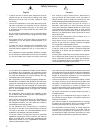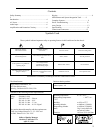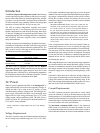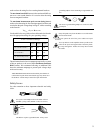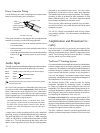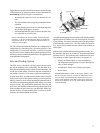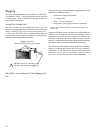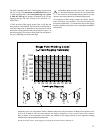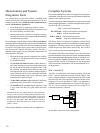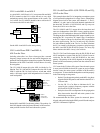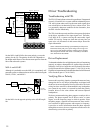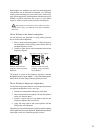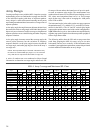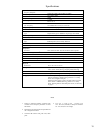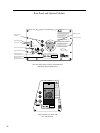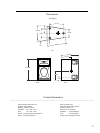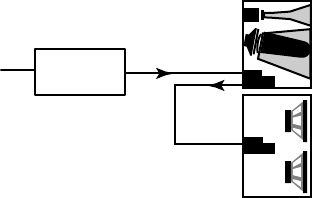
10
Measurement and System
Integration Tools
It is essential that even the most carefully assembled sound
systems be analyzed with precise measurement tools. We rec-
ommend using the Meyer SIM® System II Sound Analyzer
and CP-10 Parametric Equalizer to
• assist the process of configuring speaker systems;
• measure propagation delays between subsystems to set
the correct polarity and delay times;
• measure and equalize variations in frequency response
caused by the acoustical environment and the placement
and interaction of speakers.
We recommend using the Meyer Sound LD-1A Line Driver
to integrate different types of Meyer self-powered loudspeakers
into a complete system. The LD-1A has two channels equipped
to control a full-range main system, and six auxiliary chan-
nels for down-fill, front-fill, and delay systems. The LD-1A
maintains signal integrity for long cable paths and provides the
following useful functions:
• The Lo Cut switch activates a high-pass filter (160Hz,
–12 dB/oct, Q = 0.8) that performs a crossover function
for the Mid-Hi output.
• The DS-2/DS-4 & Sub Crossover switch (channels 1
and 2 only) activates a crossover network optimized for
the DS-2P and DS-4P when used with the 650-P. With
the switch in, frequencies below 80Hz are sent to the
Sub output (for the 650-P), and above 80Hz to the DS-2
output. When the 650-P is used without the DS-4P, the
switch should be out, which sends a full-range signal
to both the DS-2 and Sub outputs.
• The DS-2/DS-4 and Sub switches (channels 1 and 2 only)
toggle the polarity for the DS-2 and Sub outputs.
• The Mid-Hi, DS-2, and Sub outputs (channels 1 and
2 only) each have their own gain control and mute
switch.
POLARITY NOTE: The polarity for Meyer self-powered loud-
speaker systems may be reversed using the input polarity switch
on the user panel. The LD-1A also allows polarity reversal with
the DS-2 f and Sub f switches for loudspeakers connected to
the DS-2 and Sub outputs. When making polarity decisions
in applications that include the LD-1A, check the state of all
polarity switches.
Contact Meyer Sound for assistance with your application.
Complete Systems
Meyer Sound loudspeaker systems are designed to complement
one another, with the goal of ensuring full harmonic depth and
richness to the audial experience.
The following Meyer Sound loudspeaker systems are mentioned
in the example applications. Note that each application requires
the use of the LD-1A line driver.
CQ: Self-powered loudspeaker
DS-2P, DS-4P: Self-powered mid-bass loudspeakers
650-P: Self-powered subwoofer
PSW-2, PSW-4: Self-powered subwoofers
650-R2: Externally amplified subwoofer
The Meyer Sound self-powered loudspeaker systems listed
above have a loop connection to send the input signal to another
loudspeaker. Full-range signals can be applied to all Meyer
Sound self-powered subwoofers because they have built-in
active crossovers that filter mid-hi frequencies.
The cabinets in the following examples are in a close-proximity
coplanar orientation, unless otherwise stated. Externally amplified
Meyer subwoofers require the opposite polarity to all Meyer self-
powered speakers. Separating speakers by more than 5 ft may
require polarity reversal to compensate for the propagation
delay between the loudspeakers and the measurement or lis-
tening position.
MSL-4 and 650-P
The MSL-4 is particularly well matched with the 650-P and
PSW-2 and also performs efficiently with the PSW-4. Due
to the overlap in frequency response between the MSL-4 and
the subwoofer, the system frequency response exhibits a low
frequency (LF) rise in the range 65–120Hz. It is important to
emphasize that the loudspeakers are in phase in this region.
The rise can be corrected using the Meyer Sound CP-10
Parametric Equalizer, if desired.
MSL-4
loop
input
input
CP-10 EQ
(1 Channel)
650-P
Set the MSL-4 and 650-P to the same polarity.



